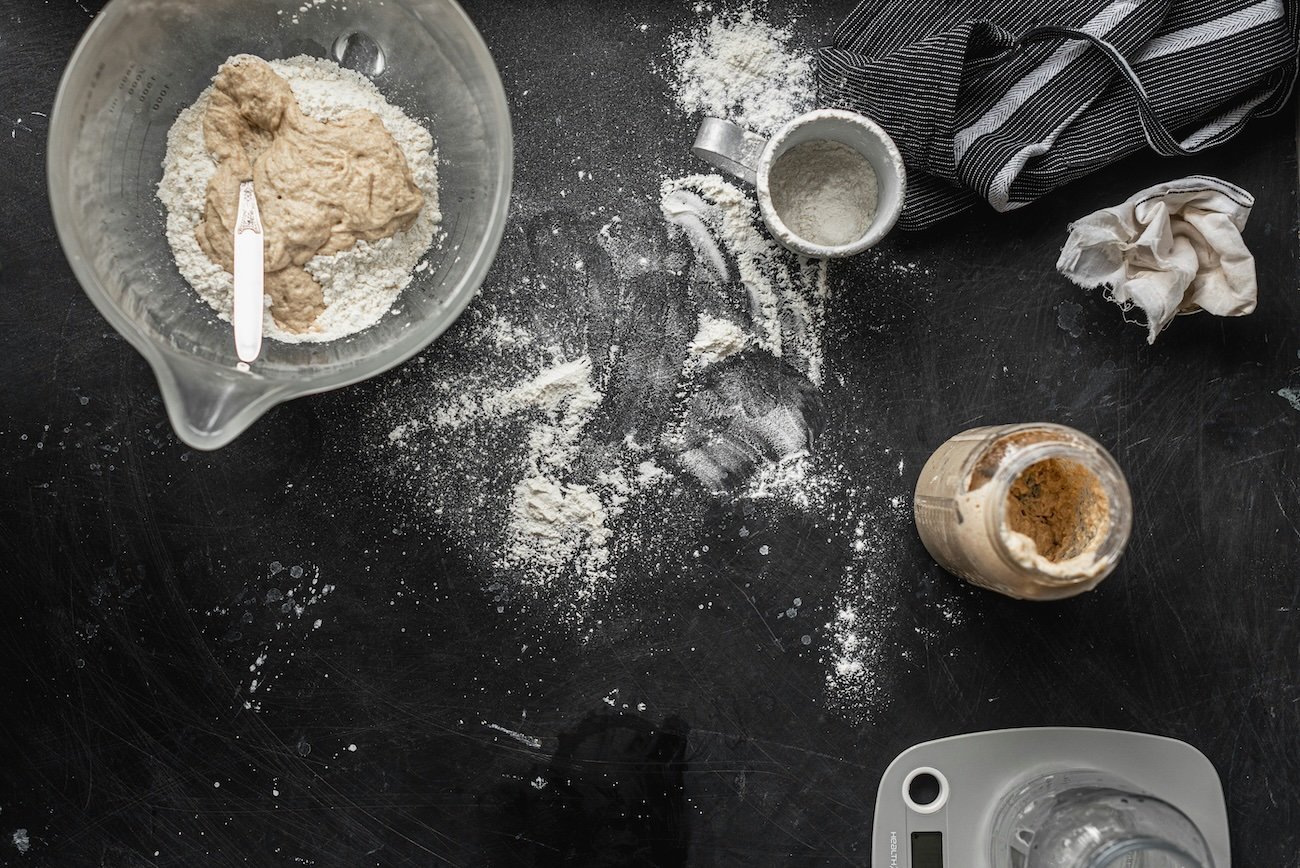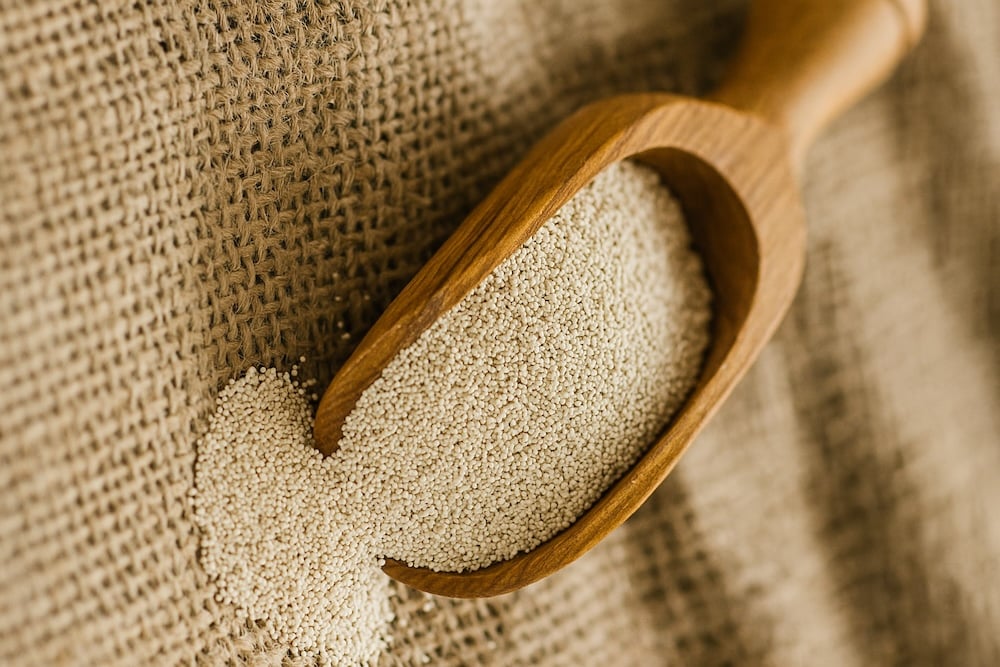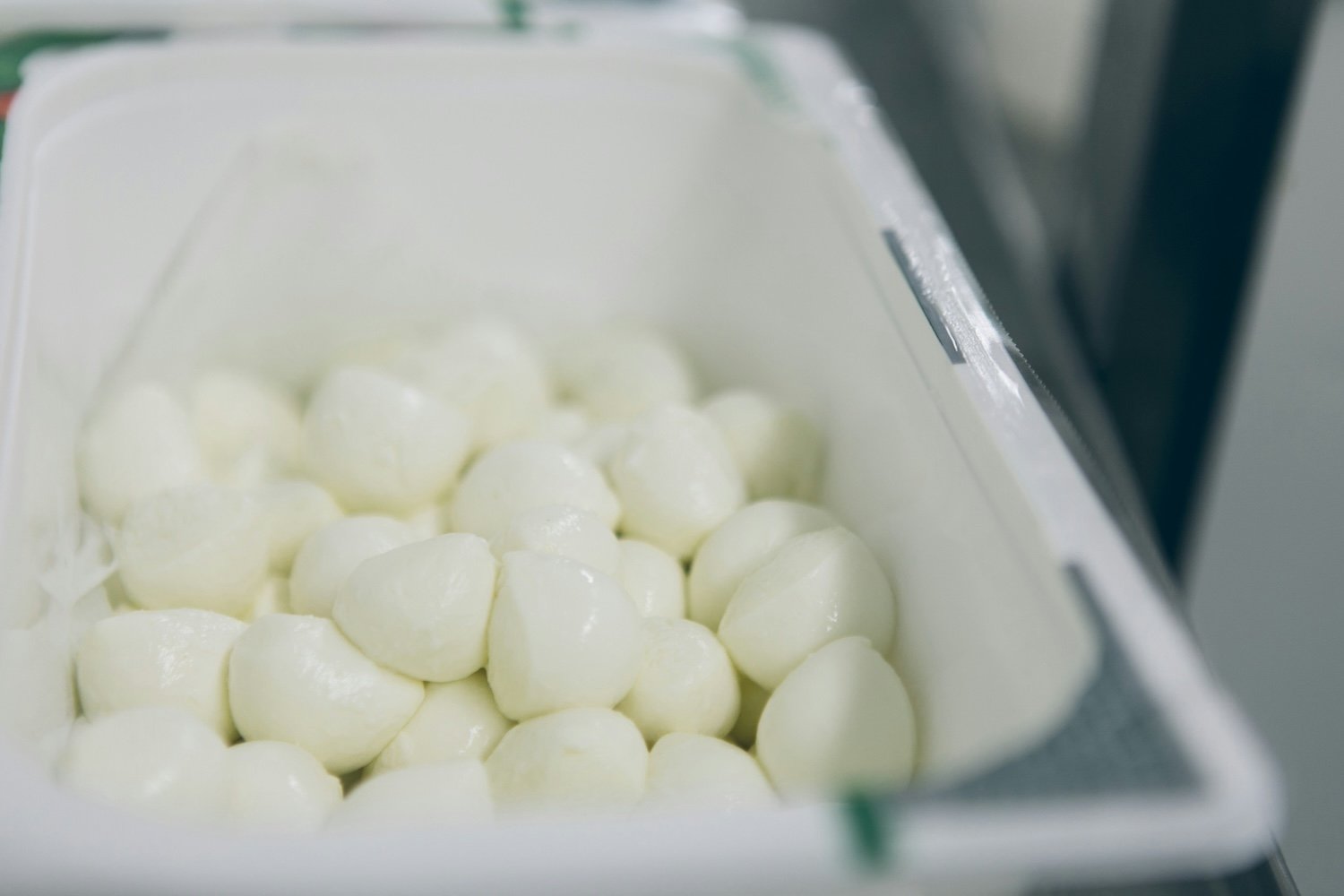Sourdough Starter: The Ancient Art of Natural Leavening
Sourdough starter is more than just a leavening agent—it's a living ecosystem, a connection to our culinary ancestors, and the key to creating some of the most flavorful and complex pizza dough imaginable. Unlike commercial yeast, which provides a single, predictable fermentation, sourdough starter is a complex community of wild yeasts and beneficial bacteria that work together to create flavors and textures that simply cannot be replicated by any other means.
The story of sourdough begins thousands of years ago, when ancient bakers discovered that if they saved a piece of dough from one batch and added it to the next, their bread would rise better and taste more complex. This simple observation led to the development of sourdough cultures that have been passed down through generations, each developing its own unique character based on the local environment, flour, and feeding schedule.
The Science of Sourdough: Understanding the Magic
Sourdough starter is a complex ecosystem that contains both wild yeasts and lactic acid bacteria, each playing crucial roles:
- Wild Yeasts: These are the primary leavening agents in sourdough, converting sugars into carbon dioxide and alcohol. Unlike commercial yeast, wild yeasts are more diverse and can include species like Saccharomyces cerevisiae, Candida milleri, and others that contribute unique flavors and characteristics.
- Lactic Acid Bacteria: These bacteria produce lactic acid and acetic acid during fermentation, creating the characteristic tangy flavor of sourdough. They also help break down complex carbohydrates, making the dough more digestible and nutritious.
- The Symbiotic Relationship: The yeasts and bacteria work together in a mutually beneficial relationship. The bacteria create an acidic environment that inhibits harmful microorganisms while providing the yeasts with nutrients. The yeasts, in turn, create conditions that favor the growth of beneficial bacteria.
- Flavor Development: The combination of wild yeasts and bacteria produces a complex array of flavor compounds, including organic acids, esters, and other compounds that create the distinctive sourdough flavor profile.
Creating Your Starter: A Step-by-Step Journey
Creating a sourdough starter is a journey that requires patience, attention to detail, and an understanding of the process:
Day 1-3: The Birth of Life
The first few days are crucial for establishing your starter. Mix equal parts flour and water (by weight) in a clean container. Use whole grain flour if possible, as it contains more nutrients and microorganisms that will help establish your culture. Cover loosely and let sit at room temperature (70-75°F/21-24°C). You should see bubbles forming within 24-48 hours, indicating that fermentation has begun.
Day 4-7: The Daily Ritual
During this period, you'll establish a daily feeding routine. Discard half the starter and feed with equal parts flour and water. Continue this process daily until your starter doubles in size within 4-6 hours of feeding. This indicates that the yeast population has become strong enough to leaven dough effectively.
Day 8+: The Maintenance Phase
Once your starter is active and predictable, you can maintain it with daily feedings or store it in the refrigerator with weekly feedings. The key is to establish a routine that works for your schedule and baking needs.
The Benefits of Sourdough in Pizza Making
Using sourdough in pizza dough offers numerous advantages over commercial yeast:
- Superior Flavor: Sourdough creates complex, nuanced flavors that commercial yeast simply cannot replicate. The combination of wild yeasts and bacteria produces a rich, tangy flavor that adds depth and character to your pizza.
- Improved Digestibility: The long fermentation process breaks down complex carbohydrates and gluten, making the dough easier to digest. This is particularly beneficial for people with mild gluten sensitivities.
- Better Texture: Sourdough creates a more open, airy crumb structure with better crust development. The natural enzymes in sourdough help create a more tender, flavorful crust.
- Extended Shelf Life: Sourdough bread and pizza dough have better keeping qualities due to the natural preservatives produced during fermentation.
- Nutritional Benefits: Sourdough fermentation increases the availability of certain nutrients and reduces the glycemic index of the final product.
Maintaining Your Starter: The Art of Care
A healthy sourdough starter requires regular care and attention. Here are the key aspects of starter maintenance:
- Feeding Schedule: For daily use, feed your starter once or twice daily. For occasional use, you can refrigerate it and feed it weekly. The key is consistency—your starter will adapt to your schedule.
- Flour Selection: Use the same type of flour consistently for feeding. Whole grain flours provide more nutrients, while white flours create a milder flavor. Many bakers use a blend for optimal results.
- Water Quality: Use filtered or bottled water to avoid chlorine, which can inhibit starter activity. Room temperature water is ideal for feeding.
- Temperature Control: Keep your starter in a warm, draft-free location. Ideal temperature is 70-75°F (21-24°C). Cooler temperatures slow fermentation, while warmer temperatures speed it up.
- Container Management: Use a clean, non-reactive container (glass or food-grade plastic). Mark your container to track rise and fall patterns.
Using Sourdough in Pizza Dough: Techniques and Tips
Incorporating sourdough into pizza dough requires understanding how it behaves differently from commercial yeast:
- Starter Preparation: Use your starter when it's at its peak activity (usually 4-6 hours after feeding). This ensures maximum leavening power and flavor development.
- Hydration Adjustment: Sourdough starters are typically 100% hydration (equal parts flour and water). Adjust your dough recipe accordingly to maintain the desired final hydration.
- Fermentation Time: Sourdough requires longer fermentation than commercial yeast. Plan for 6-24 hours of bulk fermentation, depending on temperature and desired flavor development.
- Temperature Control: Sourdough is more sensitive to temperature than commercial yeast. Use cooler temperatures (65-70°F/18-21°C) for longer, more flavorful fermentation.
Troubleshooting Common Sourdough Issues
Even experienced bakers encounter problems with their sourdough starters. Here are solutions to the most common issues:
- Starter Won't Rise: This usually indicates insufficient feeding or poor environmental conditions. Feed more frequently, ensure proper temperature, and use whole grain flour for feeding.
- Unpleasant Smell: A healthy starter should smell pleasantly sour, not foul. If it smells bad, discard most of it and feed with fresh flour and water. The smell should improve within a few feedings.
- Hooch Formation: A layer of liquid on top indicates your starter is hungry. Pour off the hooch and feed more frequently or with larger amounts.
- Mold Growth: If you see mold, discard the starter and start fresh. This usually indicates contamination or poor hygiene practices.
Advanced Sourdough Techniques: Taking It to the Next Level
Once you've mastered the basics, you can explore advanced techniques that will enhance your sourdough pizza:
- Starter Varieties: Experiment with different flours (rye, whole wheat, spelt) to create starters with unique flavor profiles. Each flour will attract different microorganisms and create distinct characteristics.
- Temperature Manipulation: Use different temperatures to control fermentation speed and flavor development. Cooler temperatures create more complex flavors, while warmer temperatures speed up fermentation.
- Starter Maturity: Use your starter at different stages of maturity for different results. Young starters (2-4 hours after feeding) provide more leavening power, while mature starters (8-12 hours after feeding) provide more flavor.
- Starter Blending: Some bakers maintain multiple starters with different characteristics and blend them for specific recipes or flavor profiles.
The Art and Science of Sourdough Mastery
Working with sourdough is both an art and a science. The science provides the foundation—understanding fermentation, temperature, and hydration—while the art comes from developing an intuitive feel for your starter and learning to read the subtle signs that indicate its health and readiness.
The key to sourdough success is patience and observation. Your starter will teach you what it needs if you pay attention. You'll learn to recognize the signs of peak activity, understand how temperature and feeding schedule affect performance, and develop the ability to adjust your techniques based on the specific characteristics of your starter.
Remember that every starter is unique, shaped by its environment, feeding schedule, and the specific microorganisms that have colonized it. Embrace this uniqueness and learn to work with your starter's individual characteristics rather than trying to force it into a rigid mold.
With time and practice, you'll develop a deep understanding of sourdough that will allow you to create pizza dough with flavors and textures that are simply impossible to achieve with commercial yeast. The journey may be challenging at times, but the rewards—in terms of flavor, satisfaction, and connection to culinary tradition—are well worth the effort.



